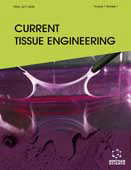Abstract
The skin, the largest organ of the body in vertebrates, represents approximately one-tenth of the body mass in humans. It is composed of the epidermis and dermis with a complex nerve and blood supply that provides vital barrier function. Disruption of epidermal integrity due to trauma, disease, burn or surgery can be fatal, and therefore strategies are needed to enhance the physiological regenerative properties of the skin.
Tissue engineering, an evolving interdisciplinary field within biomedical engineering, aims for repair of diseased and damaged tissues, such as the skin. This requires a source of cells, but additionally, support from an artificial extracellular matrix (ECM), together with appropriate molecular signals. Engineered skin substitutes represent a developing source of advanced therapy in the clinical settings (e.g. use in acute and chronic skin wounds) as well as valuable skin surrogates for lab-based drug testing for permeability and toxicity. There has yet to be a model of bioengineered skin developed which replicates completely the appearance, structure, physiology and biological stability of uninjured skin. This paper discusses the use, advantages and disadvantages of skin equivalents and future directions of research in this field.
Keywords: Collagen, connective tissue, keratinocytes, skin, tissue engineering.
 22
22

